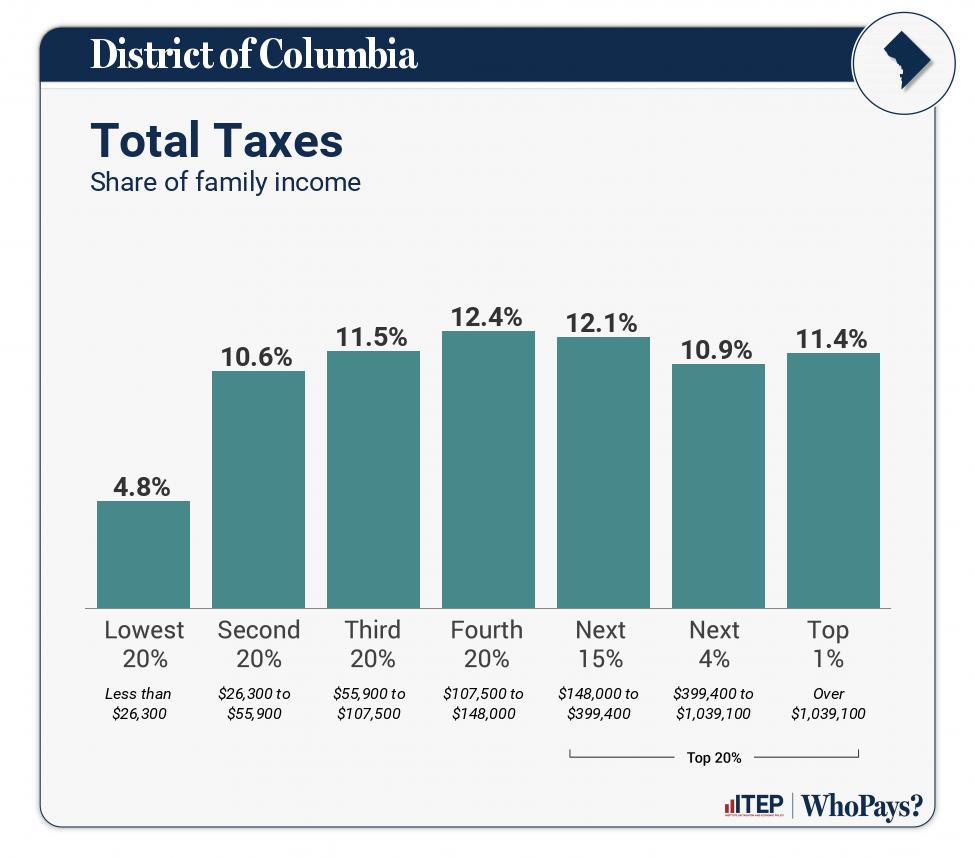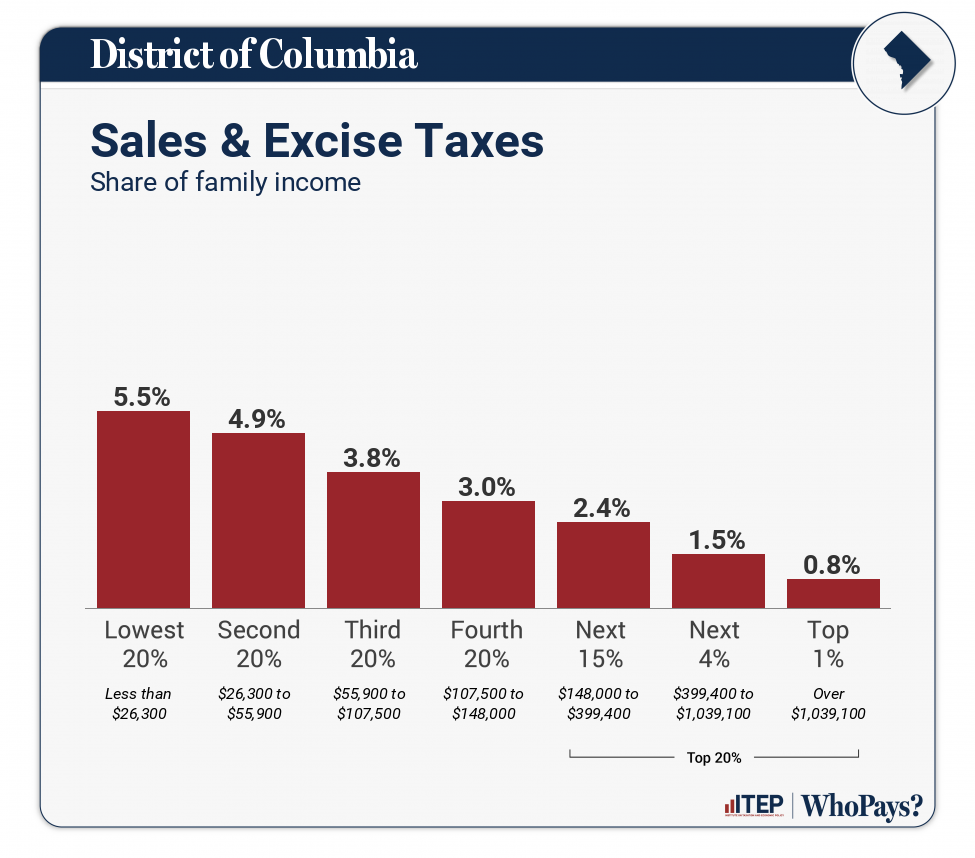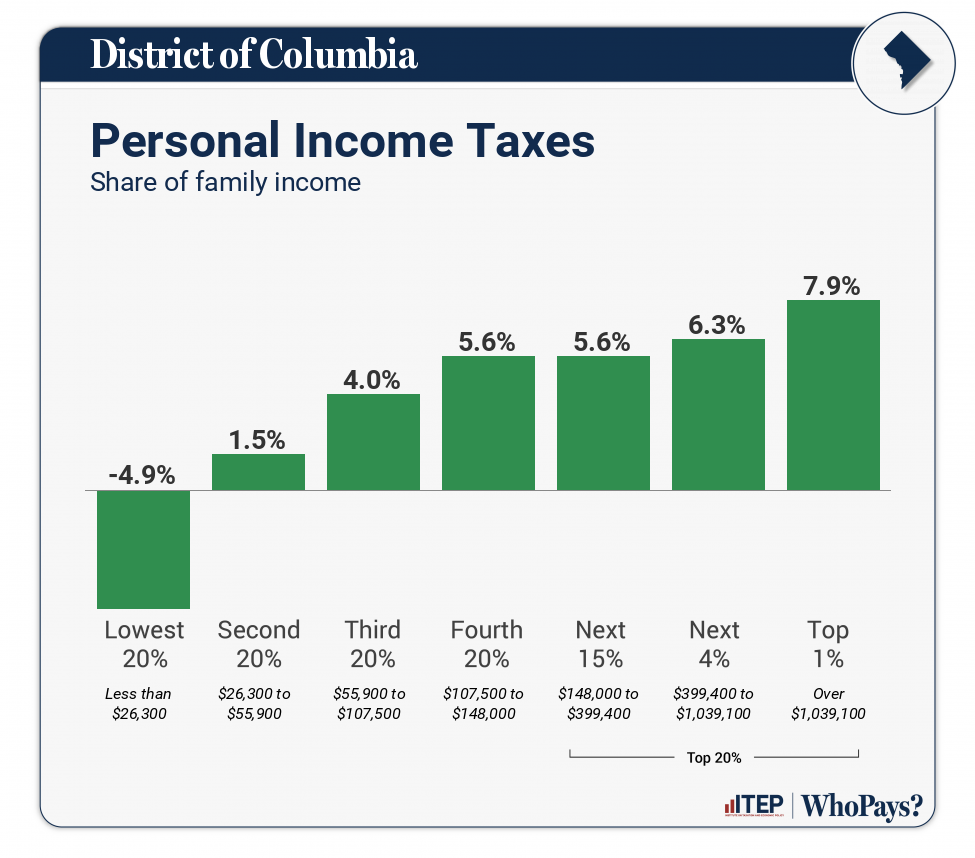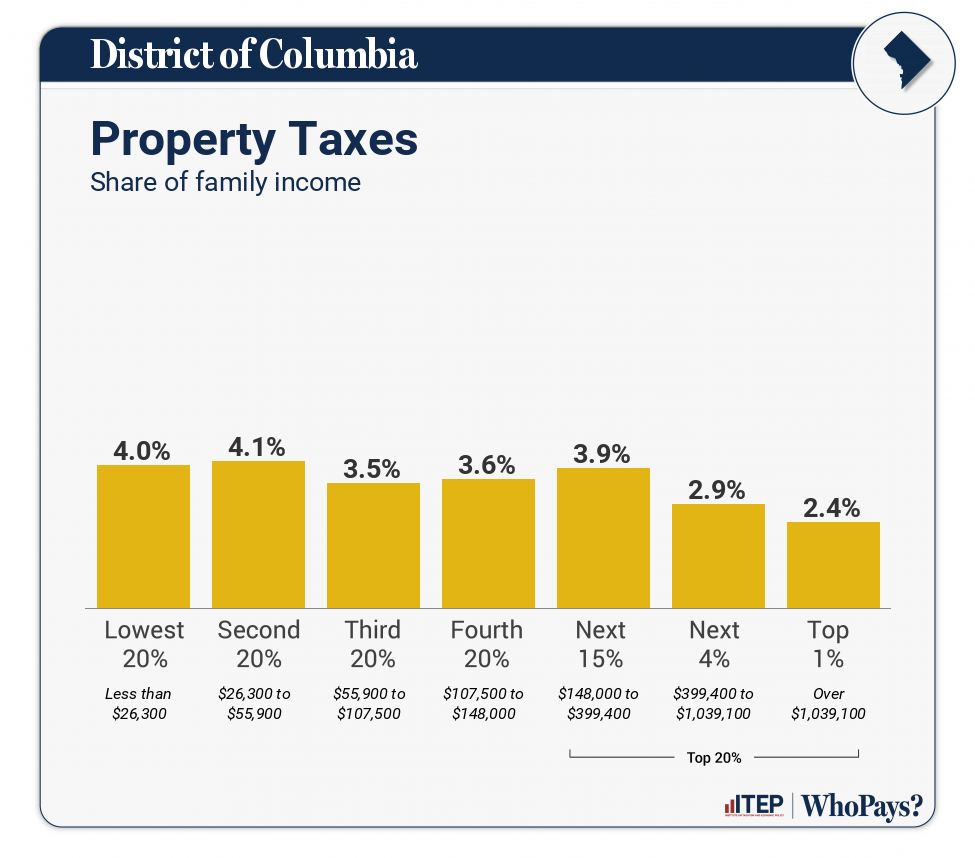District of Columbia: Who Pays? 7th Edition

District of Columbia
Download PDF
All figures and charts show 2024 tax law in the District of Columbia, presented at 2023 income levels. Senior taxpayers are excluded for reasons detailed in the methodology. Our analysis includes nearly 100 percent of DC’s tax revenue. These figures depict the District’s EITC for workers with children at its 2024 level of 70 percent of federal. The credit will increase to 100 percent over the next two years. As seen in Appendix E, this will decrease overall tax rates on the bottom two income groups by 2.0 and 0.4 percentage points, respectively.
State and local tax shares of family income
| Top 20% | |||||||
| Income Group | Lowest 20% | Second 20% | Middle 20% | Fourth 20% | Next 15% | Next 4% | Top 1% |
| Income Range | Less than $26,300 | $26,300 to $55,900 | $55,900 to $107,500 | $107,500 to $148,000 | $148,000 to $399,400 | $399,400 to $1,039,100 | Over $1,039,100 |
| Average Income in Group | $14,400 | $40,100 | $77,900 | $131,400 | $229,900 | $605,300 | $3,198,500 |
| Sales & Excise Taxes | 5.5% | 4.9% | 3.8% | 3% | 2.4% | 1.5% | 0.8% |
| General Sales–Individuals | 3.3% | 3.1% | 2.3% | 1.8% | 1.3% | 0.7% | 0.2% |
| Other Sales & Excise–Ind | 0.9% | 0.6% | 0.5% | 0.4% | 0.3% | 0.2% | 0% |
| Sales & Excise–Business | 1.2% | 1.2% | 1% | 0.9% | 0.8% | 0.6% | 0.6% |
| Property Taxes | 4% | 4.1% | 3.5% | 3.6% | 3.9% | 2.9% | 2.4% |
| Home, Rent, Car–Individuals | 2.8% | 2.8% | 2.4% | 2.5% | 2.7% | 1.7% | 0.7% |
| Other Property Taxes | 1.2% | 1.2% | 1.1% | 1.1% | 1.2% | 1.2% | 1.8% |
| Income Taxes | -4.9% | 1.5% | 4% | 5.7% | 5.7% | 6.4% | 8.1% |
| Personal Income Taxes | -4.9% | 1.5% | 4% | 5.6% | 5.6% | 6.3% | 7.9% |
| Corporate Income Taxes | 0% | 0% | 0% | 0% | 0.1% | 0.1% | 0.2% |
| Other Taxes | 0.2% | 0.2% | 0.1% | 0.1% | 0.1% | 0.1% | 0.1% |
| TOTAL TAXES | 4.8% | 10.6% | 11.5% | 12.4% | 12.1% | 10.9% | 11.4% |
| Individual figures may not sum to totals due to rounding. | |||||||
ITEP Tax Inequality Index
The District of Columbia has a hybrid system that is progressive through some parts of the income distribution and regressive through other parts. On balance, the overall system tilts slightly progressive according to ITEP’s Tax Inequality Index because low-income families face meaningfully lower rates than other groups. The highest earners, however, pay rates that are lower than those faced by some middle-income families. The District of Columbia ranks 51st on the Index, meaning that no state has a more progressive system. (See Appendix B for state-by-state rankings and the report methodology for additional detail.)
Tax features driving the data in District of Columbia
|
Requires combined reporting for the corporate income tax; some foreign tax haven income is partially taxed through GILTI inclusion
Refundable property tax “circuit breaker” credit for low-income and senior taxpayers
Graduated personal income tax structure with a separate bracket for millionaires
Graduated rate structure for the real estate transfer tax
Limits itemized deductions for upper-income taxpayers
Refundable Earned Income Tax Credit (EITC)
Sales tax base excludes groceries
Levies a state estate tax
|
|
|
Comparatively high reliance on property taxes
No Child Tax Credit (CTC)
|




